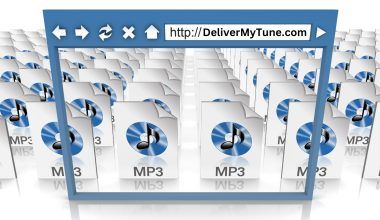The music industry has undergone a seismic shift in recent years, with digital transformation playing a pivotal role. One of the most significant developments has been the integration of data and analytics in music distribution. This advancement has not only democratized access for artists but has also enhanced the way music is marketed, consumed, and monetized. In this blog, we will delve into the role of data and analytics in music distribution, highlighting its impact on artists, listeners, and the industry at large.
The Evolution of Music Distribution
Traditional vs. Digital Distribution
Traditionally, music distribution involved physical media such as CDs and vinyl records. This method had significant barriers to entry, including high production costs and limited reach. Digital distribution, however, has broken down these barriers, allowing artists to distribute their music globally with minimal investment. Platforms like Spotify, Apple Music, and YouTube have become crucial in this new landscape.
The Digital Shift
The shift from physical to digital has also brought about a surge in data generation. Every stream, download, and interaction generates valuable data that can be analyzed to gain insights into listener behavior and preferences. This data is the cornerstone of modern music distribution strategies.
The Role of Data and Analytics in Music Distribution
Understanding Listener Behavior
Data analytics allows music distributors to understand listener behavior on a granular level. By analyzing streaming data, playlists, and user interactions, distributors can identify trends and preferences. This information helps artists and labels tailor their marketing strategies to reach the right audience at the right time.
For instance, Spotify for Artists provides data on the demographics and geographic locations of listeners. Analyzing this data helps artists understand where their music is most popular and allows them to plan tours and promotional activities accordingly. By knowing their audience, artists can create content that resonates more effectively, leading to increased engagement and loyalty.
Personalization and Recommendation Algorithms
One of the most prominent uses of data in music distribution is in personalization and recommendation algorithms. Platforms like Spotify and Apple Music use complex algorithms to recommend songs and playlists to users based on their listening history. This personalization enhances user experience and keeps listeners engaged.
These algorithms consider various factors, such as the genre of music a user listens to, the time of day they are most active, and the frequency with which they listen to certain tracks. By leveraging this data, streaming platforms can create highly personalized playlists that cater to individual tastes, thereby increasing user satisfaction and retention.
Market Segmentation
Data analytics enables precise market segmentation. Distributors can categorize listeners based on demographics, geographical locations, and listening habits. This segmentation allows for targeted marketing campaigns, ensuring that promotional efforts reach the most relevant audience.
For example, a music distributor might identify a significant fan base for a particular genre in a specific region. Armed with this information, they can launch targeted advertising campaigns and promotional events in that region, maximizing their impact and return on investment. This targeted approach is far more efficient than broad, generic marketing efforts.
Predictive Analytics
Predictive analytics plays a crucial role in anticipating market trends and consumer behavior. By analyzing historical data, distributors can forecast which songs or artists are likely to succeed. This predictive capability helps in making informed decisions about marketing spends and promotional strategies.
For instance, if data indicates that a particular artist’s new single is likely to perform well based on pre-release streams and social media buzz, the distributor can allocate more resources to promote that single. This proactive approach can significantly boost the chances of the single becoming a hit.
Benefits of Data and Analytics for Artists
Enhanced Reach and Visibility
For independent artists, the role of data and analytics in music distribution cannot be overstated. Analytics tools help artists understand where their music is being played and who their listeners are. This insight allows for targeted promotions, increasing reach and visibility.
By understanding which regions or demographics are most responsive to their music, artists can tailor their promotional efforts to those specific areas. This targeted approach not only maximizes the impact of their marketing efforts but also helps them build a loyal fan base in regions where they have the most potential for growth.
Improved Fan Engagement
Data-driven insights enable artists to engage with their fans more effectively. Understanding what content resonates with their audience helps artists create more engaging social media posts, newsletters, and other promotional content.
For instance, if data shows that fans respond well to behind-the-scenes content, artists can produce more of this type of content to keep their audience engaged. Additionally, understanding peak engagement times can help artists schedule their posts to maximize visibility and interaction.
Royalty Optimization
Data analytics also plays a significant role in royalty collection and optimization. By tracking where and how often their music is played, artists can ensure they are receiving fair compensation. This transparency is crucial in an industry where royalty distribution has historically been opaque.
Tools like Spotify for Artists and Apple Music for Artists provide detailed reports on streams, downloads, and earnings. This information helps artists understand their revenue streams and identify any discrepancies. By having a clear understanding of their income sources, artists can make informed decisions about their careers and financial planning.
Challenges and Considerations
Data Privacy and Security
With great power comes great responsibility. The collection and use of data in music distribution raise significant privacy and security concerns. It is crucial for distributors to handle data responsibly and comply with regulations like GDPR to protect user privacy.
Artists and distributors must be transparent about how they collect and use data. They should implement robust security measures to protect user data from breaches and unauthorized access. Compliance with data protection regulations is not only a legal requirement but also essential for maintaining trust with users and fans.
Data Overload
Another challenge is data overload. With so much data available, it can be overwhelming to sift through and identify actionable insights. It requires sophisticated tools and expertise to make sense of the data and use it effectively.
To manage data overload, artists and distributors should focus on key performance indicators (KPIs) that align with their goals. By prioritizing the most relevant data points, they can avoid getting bogged down by irrelevant information and make more informed decisions.
Balancing Art and Analytics
While data and analytics provide valuable insights, it is essential to balance them with artistic intuition. Music is an art form, and relying solely on data can stifle creativity. Successful artists and distributors find a balance between data-driven decisions and creative freedom.
Data should be used as a tool to enhance creativity, not constrain it. For example, while data might suggest a certain trend is popular, artists should feel free to experiment and innovate beyond these trends. Striking the right balance ensures that the music remains fresh and original while still appealing to a broad audience.
Future Trends in Data and Analytics for Music Distribution
AI and Machine Learning
The future of data and analytics in music distribution lies in artificial intelligence (AI) and machine learning. These technologies can process vast amounts of data in real-time, providing even more precise insights and predictions. AI-driven tools will continue to revolutionize how music is distributed and consumed.
For instance, AI can analyze listener preferences and predict which new songs are likely to become hits. This predictive capability can help distributors allocate resources more effectively and increase the chances of success for new releases. Additionally, machine learning algorithms can continuously improve recommendation systems, providing an even more personalized listening experience.
Blockchain for Royalty Tracking
Blockchain technology holds promise for improving transparency and efficiency in royalty tracking. By creating a decentralized and immutable ledger of music transactions, blockchain can ensure that artists are fairly compensated for their work.
Blockchain can simplify the royalty payment process by providing a clear and transparent record of all transactions. This technology can reduce disputes over royalty payments and ensure that artists receive their fair share promptly. As blockchain technology becomes more widely adopted, it could transform the financial landscape of the music industry.
Enhanced Personalization
As data collection and analysis become more sophisticated, the level of personalization in music distribution will increase. Future algorithms will be able to predict listener preferences with greater accuracy, providing an even more tailored listening experience.
For example, future recommendation systems might not only suggest songs based on listening history but also consider factors like mood, weather, and time of day. This level of personalization will enhance user satisfaction and engagement, making music streaming an even more integral part of daily life.
Conclusion
The role of data and analytics in music distribution is transformative. It has revolutionized how music is marketed, consumed, and monetized, providing valuable insights to artists and distributors alike. While challenges remain, the benefits far outweigh the drawbacks, making data and analytics an indispensable tool in the modern music industry. As technology continues to evolve, we can expect even more innovative uses of data and analytics, further shaping the future of music distribution.
For further reading, explore these related articles:
- How Can a Music Distribution Company Help a Musician?
- How to Claim a YouTube Artist Channel?
- YouTube Official Artist Channel: What it is & Why I have its Need?
For additional resources on music marketing and distribution, visit Deliver My Tune.






